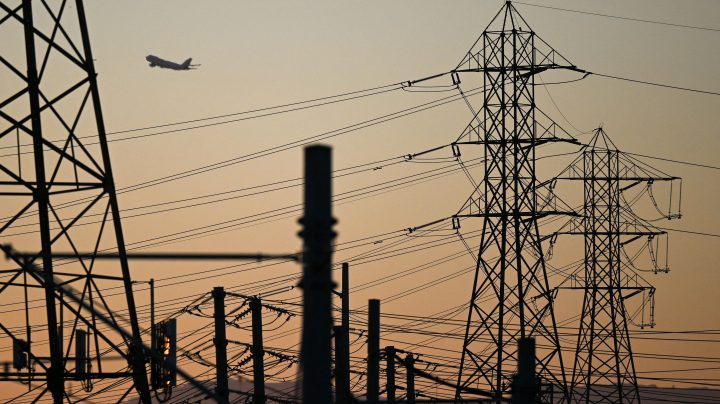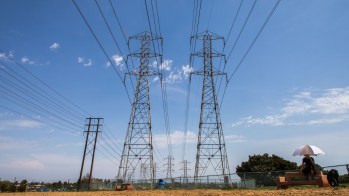
Utilities’ emergency costs spark surge in ratepayer-funded recovery bonds
Utilities’ emergency costs spark surge in ratepayer-funded recovery bonds

Consumers across America saw their power bills balloon by 14.3% on average last year. Those rising costs aren’t expected to reverse any time soon. Utilities are trying to finance all kinds of costs, like repairs for damage done by the storms that have hit much of the country this winter.
To pay those expenses, utilities are increasingly turning to something called “securitization.” You may recall securitized mortgages played a big part in the run-up to the Great Recession. In the utility sector, the first major experiment with securitization traces back more than two decades, when the now-defunct Texas energy giant Enron and other power traders manipulated California’s newly deregulated electricity markets.
Two Enron employees were recorded boasting about gouging ratepayers in the West:
“So the rumor’s true? They’re [expletive] taking all the money back from you guys? All the money you stole from those poor grandmothers in California?” one Enron trader joked, referencing demands by state officials that companies and traders pay refunds.
“Yeah, Grandma Millie, man,” a second trader replied.
As a result of the price gouging, California utility Pacific Gas and Electric filed for bankruptcy, and another threatened to follow, said Mark Toney, who directs The Utility Reform Network.
“The state had to purchase emergency power at extremely high prices. And so there was a huge amount of debt left over,” Toney said. “That was the first utility securitization in the country.”
Utilities issued long-term bonds to finance the emergency debt racked up when California purchased all that emergency power and passed on the expense to ratepayers.
“And for about 20 years, when you looked at your monthly bill, there was [a line item] for paying back the debt,” Toney said.
But when that debt was almost paid off, another crisis hit: wildfires sparked by equipment owned by PG&E and other utilities. California responded by setting up a $21 billion wildfire insurance fund — half of it paid, again, by customers.
“That now shows up on our monthly utility bills. And while we thought we were going to get some rate relief, that didn’t happen,” Toney said.
Securitization isn’t limited to California. More than half of states have legislation in place permitting utilities to use securitization to pay off massive one-time expenses. Bloomberg estimates the market for recovery bonds exploded by almost 800% from $2.3 billion in 2021 to around $20 billion last year. They’ve covered costs like disaster repairs, collection shortfalls caused by the pandemic, and the retirement of old power plants.
“It prevents the rate shock that you would have if you’re immediately flowing something like that through,” said Richard McMahon, senior vice president at the Edison Electric Institute, an association representing all U.S. publicly-traded electric companies.
Securitization works by spreading out costs over time and can be cheaper than traditional utility financing because the bonds are backed by the state, he said. “It’s much lower cost in terms of interest expense that you need to pay investors by doing it through securitization.”
But advocates say the one-off events increasingly paid for by securitization aren’t so “one-off” when you factor in climate change. In the case of the deadly winter storm in Texas and nearby states two years ago, prices for gas and electricity skyrocketed. Maria Reyes, deputy director of the Texas-based nonprofit Commission Shift, calls the incident an industrial failure.
“They didn’t weatherize their equipment. They didn’t prepare for what was coming,” Reyes said.
Ratepayers shouldn’t be stuck paying the sky-high energy prices that natural gas companies charged, which utilities passed through to customers, she said. “The companies, the industry, the market, the shareholders — they should bear the burden” at a time when 1 in 6 American families are behind on their utility bills, according to the National Energy Assistance Directors Association.
While securitization has its benefits, the approach requires scrutiny and oversight, said Bruce Biewald, CEO of the consulting firm Synapse Energy Economics.
“In a lot of cases, those costs maybe shouldn’t be recovered. Or maybe regulators, if they reviewed the costs, would see that they weren’t all prudently incurred,” Biewald said.
As the industry turns to securitization more, he said customers could end up paying for emergency costs for decades — and more frequently.
There’s a lot happening in the world. Through it all, Marketplace is here for you.
You rely on Marketplace to break down the world’s events and tell you how it affects you in a fact-based, approachable way. We rely on your financial support to keep making that possible.
Your donation today powers the independent journalism that you rely on. For just $5/month, you can help sustain Marketplace so we can keep reporting on the things that matter to you.

















